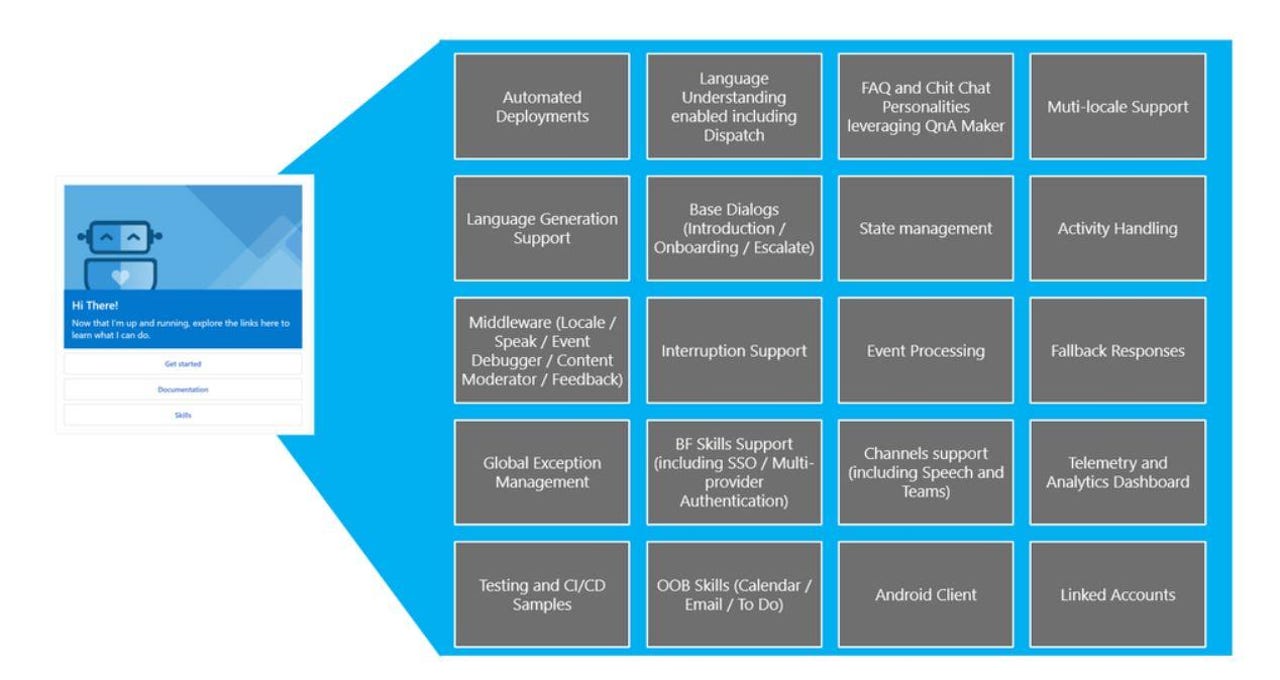Microsoft pushes ahead with its bot-service tools


More Microsoft
A few years ago at its Build developer conference, Microsoft made its conversation as a service (CaaS) offerings the centerpiece of its announcements. This year, Microsoft made some solid advancements with its bot services, but didn't trumpet them nearly as loudly.
First, a quick refresh on Microsoft terminology. Azure Bot Service is for customers who want to build enterprise-grade bots while maintaining control of their data. Microsoft Bot Framework is for users who want to build custom bots which can be used as integrated component.
Microsoft's Virtual Assistant Solution Accelerator is now generally available. This allows users to set up and customize their own virtual assistants more easily. Microsoft is adding more skills to Virtual Assistant, like calendar, to-do and "who," to help users be able to fine-tune their bots. The Virtual Assistant Accelerator is open-sourced and available via GitHub.
Another key announcement is that Microsoft's Bot Framework Composer designer tool is generally available. The Bot Framework Composer allows users (developers and not) to build conversational bots without having to write code. The Bot Framework Composer, which is available for Windows, MacOS, Linux and as a web-based component, enables users to build and export Bot Framework skills and/or the Composer assets, such as Microsoft's Language Understanding Service (LUIS) and QnA Maker, which can be plugged into other bots.
Microsoft has added the ability for the Bot Framework to reuse other bots as skills. This is meant to keep the overall number of bots under control. It also enables companies to extend their Power Virtual Agents, which could help users build no-code/low-code customer-service-agent bots. Microsoft also has simplified the handoff from bots to humans in Azure Bot Service so that users don't have to build custom integrations for this purpose.
Microsoft also announced at Build that its Bot Framework Software Development Kit, version 4.9, is available. This version of the SDK includes a number of updates and new APIs, as well as the generally available version of Active Dialogs. Adaptive Dialogs are meant to help developers build bots that can switch contexts within a conversation. (Microsoft's example: Someone booking a flight online might ask a bot for the weather forecast for the destination city.) The Bot Framework SDK also is better integrated with Microsoft Teams now, officials said.
Last but not least, Microsoft has enabled the Bot Framework (using the SDK 4.8 or later) to connect to Alexa. There are tens of thousands of Alexa skills, but up until now, there hasn't been a formal way to use Microsoft's Bot Framework tools to create these kinds of published Alexa skills. The documentation for how to use the Microsoft Bot Framework service to build an Alexa skill is here.